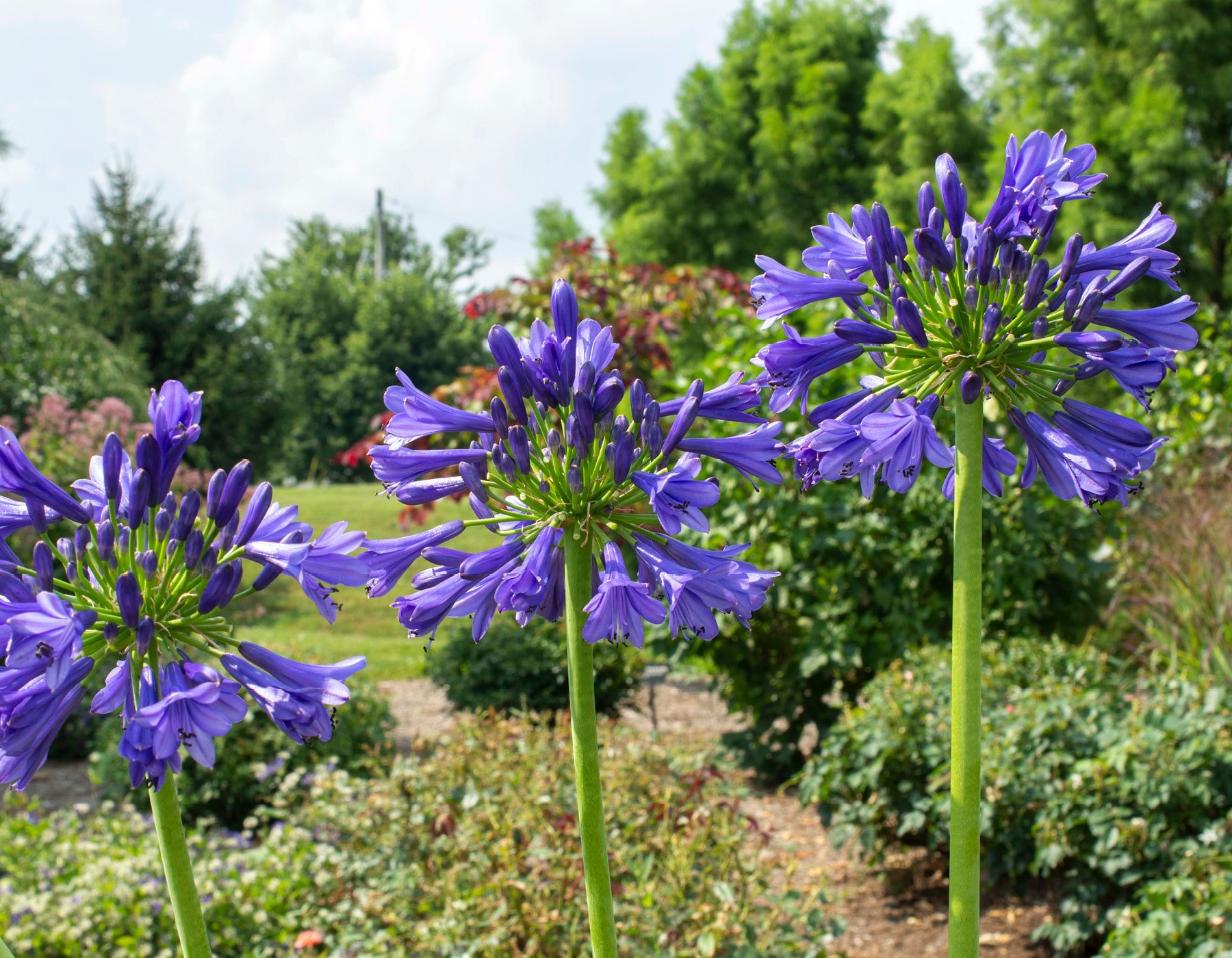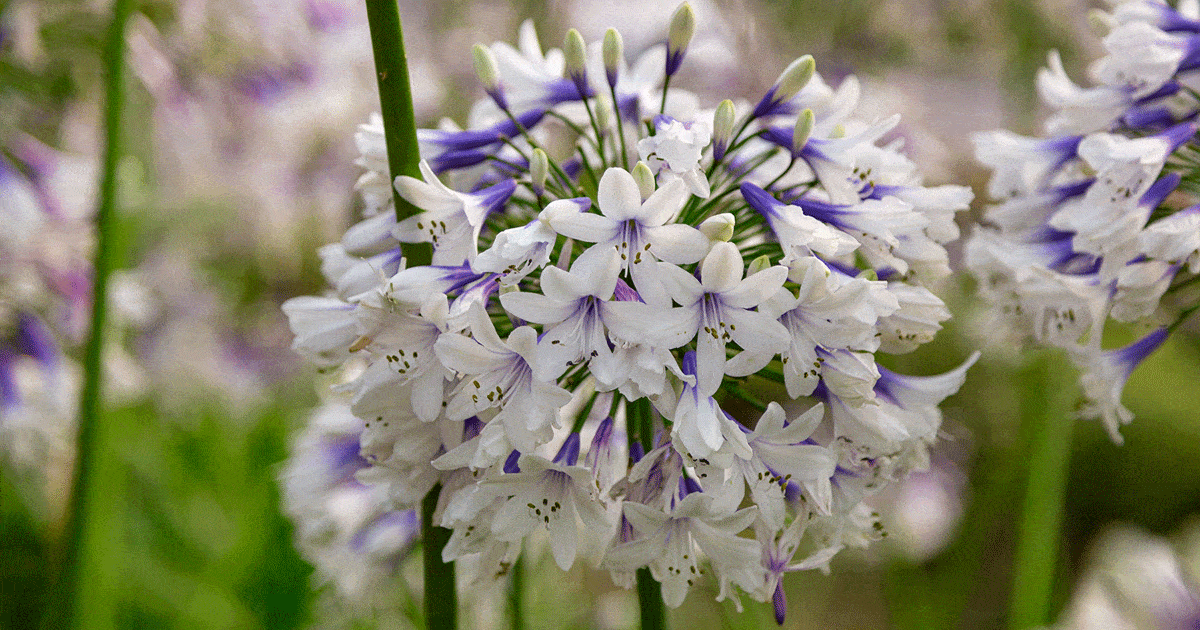Agapanthus Varieties: Choosing the most effective for Your Landscape
Agapanthus Varieties: Choosing the most effective for Your Landscape
Blog Article
Unleashing the Secret to Effective Agapanthus Growing: Advice for a Flourishing Garden
In the realm of horticulture, growing agapanthus effectively requires a tactical strategy that includes different aspects of plant treatment. With mindful focus to information, one can unlock the secrets to nurturing these stunning blooms, bring about a yard that thrives with elegance and vibrancy. By understanding the subtleties of agapanthus cultivation, one can create an environment where these plants prosper and bloom abundantly. In the adhering to conversation, we will certainly explore necessary ideas and tricks that will assist you in the direction of a flourishing agapanthus garden, using insights into finest practices, soil conditions, sprinkling methods, and more.
Planting Agapanthus: Finest Practices
When planting Agapanthus, proper dirt prep work is vital for making certain successful growth and advancement of these stunning flowers. Agapanthus, generally referred to as Lily of the Nile or African lily, prospers in well-draining dirt with a somewhat acidic to neutral pH level - Agapanthus. Before growing, it is critical to change heavy clay soils with raw material such as garden compost or peat moss to enhance water drainage and give essential nutrients for the plants
To plant Agapanthus, pick a place that gets complete sunlight to partial color, as this will certainly advertise healthy and balanced growth and abundant flowering. Dig an opening two times the size of the plant's root round and place the Agapanthus at the same depth it was formerly growing. Carefully backfill the opening with soil, weighing down securely to remove any type of air pockets around the roots.
Water the newly planted Agapanthus completely and continue to keep the dirt uniformly damp, particularly during the plant's active growing season. Agapanthus. Using a well balanced plant food once a month can additionally support the plant's development and flowering. By following these finest techniques for growing Agapanthus, you can develop a sensational display of these exciting blossoms in your garden
Perfect Dirt Issues for Agapanthus
For ideal development and growing success of Agapanthus plants, making certain the dirt problems are ideal is vital. Agapanthus likes dirt that is rich in nutrients, so including a well balanced plant food during the expanding period can advertise healthy development and dynamic blooms.

Watering and Feeding Tips
To ensure healthy growth and vibrant flowers, correct watering and fertilizing strategies are vital for successful Agapanthus growing. Agapanthus plants take advantage of normal watering, specifically throughout the growing period. It is advised to water deeply when a week, ensuring the dirt is moist but not saturated. During hot weather condition or in pots, even more frequent watering might be necessary to avoid the soil from drying out completely.
When it comes to fertilizing Agapanthus, a well balanced plant food with equivalent components nitrogen, phosphorus, and potassium can be applied in the springtime to promote healthy and balanced development and flowering. Slow-release fertilizers are perfect for providing nutrients progressively over an extended period. Avoid over-fertilizing, as this can cause too much foliage development at the cost of flowers.
In addition, incorporating raw material like garden compost into the dirt can boost nutrient levels and boost soil structure, aiding in the general health of the Agapanthus plants. By complying with these watering and feeding tips, gardeners can ensure their Agapanthus plants grow and generate stunning screens of blossoms.
Pruning and Deadheading Techniques
Proper trimming and deadheading strategies play a vital role in keeping the wellness and looks of Agapanthus plants, matching the crucial methods of watering and feeding for successful farming. Pruning Agapanthus includes getting rid of spent flower heads, dead or yellowing fallen leaves, and general shaping of the plant to promote far better growth. Deadheading, the procedure of eliminating faded flowers, not just boosts the plant's appearance yet likewise motivates additional blooming.
When deadheading Agapanthus, it is suggested to trim off the blossom stem at the base using sharp, clean shears. This process reroutes the plant's energy from seed manufacturing back right into root and vegetation growth, promoting a healthier and much more robust plant. Normal deadheading can expand the blooming duration of Agapanthus and prevent self-seeding, which can bring about congestion.
In terms of pruning, Agapanthus normally take advantage of a light trim after blossoming to clean the plant and encourage fresh growth. Reducing the invested blossom stems and eliminating any kind of dead or damaged foliage aids keep the plant's vitality and overall look. However, it is necessary to stay clear of reducing into the crown of the plant, as this can compromise its health.

Protecting Agapanthus From Pests and Diseases
Executing efficient bug and condition administration methods is important to protecting the see this website wellness and vigor of Agapanthus plants in farming. One common parasite that impacts Agapanthus is the Agapanthus borer, a caterpillar that tunnels right into the plant, causing damage to the fallen leaves and blossoms.
In addition to bugs, Agapanthus are prone to illness such as root rot and fungal fallen leave spots. By remaining cautious and resolving bug and condition issues quickly, garden enthusiasts can assist their Agapanthus flourish and prosper.

Verdict
To conclude, successful farming of agapanthus needs correct planting strategies, optimal soil problems, sufficient watering and feeding, routine trimming and deadheading, and security from pests and diseases. By adhering to these pointers and tricks, garden enthusiasts can ensure a growing garden filled up with gorgeous agapanthus blooms. Agapanthus. Remember to keep consistent treatment and interest to detail to promote the health and long life of these magnificent plants
When planting Agapanthus, proper soil prep work is crucial for making certain successful development and development of these beautiful blossoms.Water the recently grown Agapanthus thoroughly and proceed to maintain the soil equally wet, particularly throughout the plant's active expanding period.For ideal development and blooming success of Agapanthus plants, ensuring the dirt problems are suitable is important. When hair look at here now transplanting or growing Agapanthus, ensure the dirt is well-prepared to supply the required foundation for the plants Web Site to establish themselves successfully. One common pest that influences Agapanthus is the Agapanthus borer, a caterpillar that tunnels into the plant, creating damage to the flowers and leaves.
Report this page